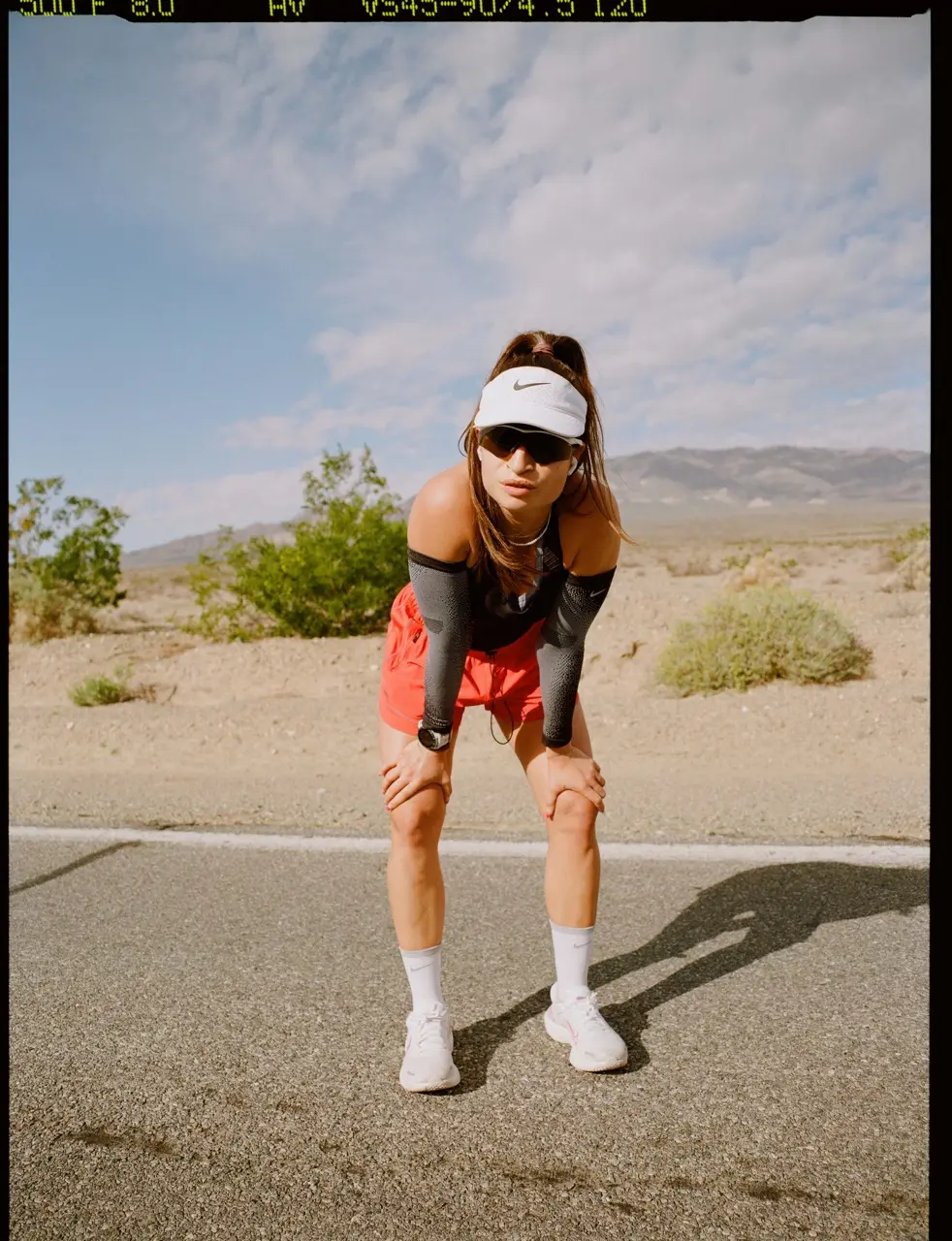
February 9, 2025
Unknown Author
- Health
- Sport
Learning to Jog: The Best Tips & Tricks
Can every person truly discover running for themselves? "Yes," says expert Andrea Goceva, and reveals her tips.

February 9, 2025
Unknown Author
Can every person truly discover running for themselves? "Yes," says expert Andrea Goceva, and reveals her tips.
Running is considered one of the most accessible sports, yet myths, prejudices, and excuses persist. Many therefore ask: Can everyone really discover running for themselves? “Yes,” says Andrea Goceva.
The native Macedonian is an expert in movement, performance and rehab coach, the face of Nike Running, and trainer of the Running Community Berlin Braves. She herself comes from competitive sports, was involved in modern pentathlon as a child and teenager, and was part of the German national team. When “ The Andi G. ”, as she calls herself on Instagram, is not currently training with her clients around the world, she attends movement symposiums or works on opening her own gym in Berlin, where she will offer group courses in addition to private sessions in the future.
What is special about the 27-year-old: Her sporting views are modern, approachable, adapt to the demands of our fast-paced society, really address each person individually, question the familiar, and above all, clear up dusty clichés.
Becoming a personal trainer was never your dream: After a bachelor's degree in automotive engineering, you're currently in the final stages of your master's degree in medical engineering. What drives you?
I want to know how movement and good training work. This naturally also includes a healthy lifestyle . For several months now, I've been increasingly involved in biomechanics. Behind it is the science that explores how the body moves, how forces arise, and how bones and joints behave. It's not about muscles, but about movement processes: how do the skeleton, joints, and muscles interact, and how can muscles be specifically trained this way.
You always hear that jogging is bad for your joints. Is that true?
Not moving is bad for the joints. Joints need movement, otherwise, they become stiff. The body is incredibly adaptable, but it needs time. Parkour runners jump from five meters high and roll without getting hurt. If I did that today, I would break my bones. But I could train for it, and maybe it would work one day. It's the same with jogging: running ten kilometers out of nowhere hurts. But with slow, continuous stress, the body adapts step by step.

© iampatrickpilz
"Running is a very rhythmic sport and you need to develop a feel for this rhythm."
So can every person actually learn to jog?
Absolutely. Anyone with working legs can jog. The best thing about running is that it has such a low entry barrier. You need a sneaker, not even a running shoe at first, and you can start running. The biggest mistake most people make is starting out too fast and being out of breath after five minutes.
How should you start instead, or what does the perfect training plan for beginners look like?
Running is a very rhythmic sport, and you have to develop a feel for this rhythm. This only happens if you do it regularly. That's why it's better to run more often and shorter, rather than less frequently and longer. Two to three training sessions per week are definitely sensible. At first, you jog for two to three minutes and then walk for one to two minutes. This is followed by another two to three minutes of jogging and one to two minutes of walking. You do this for a total of 15 minutes. You can increase every week.
And how do you progress in jogging?
A rule of thumb that is a good guideline for beginning runners says: Increase the training volume by ten percent per week. This means: If you run twice for 15 minutes and once for 20 minutes in the first week – a total of 50 minutes – you increase to a total of 55 minutes in the second week.
Condition and breathing are often a challenge initially. With bad luck, you jog with a stitch. Do you have any tips on how to avoid that?
With a stitch, the small muscles between the ribs, the respiratory muscles, cramp up. This happens mainly when you talk while jogging and therefore breathe irregularly. Something I have adopted in competitive sports: In relaxed runs, breathe in and out for three steps. So: left, right, left - inhale. Right, left, right - exhale. For fast runs, reduce the breath to two steps. This creates a good rhythm. Also, as a beginner runner, you shouldn't necessarily jog with music, as this can disrupt the breathing. It's better to run without music for now and just focus on the breathing.
Is there something everyone can practice that is particularly good as a running preparation?
Jumping! A movement , that many no longer do. Jumping is very strenuous because it requires enormous strength to accelerate your own body weight. Regular jumping strengthens tendons, ligaments, and bones , improved responsiveness and trains the ability to catch yourself. It is also an excellent fall prevention in old age, as it promotes strength, coordination, and body control.
How does this affect jogging?
Running means working against gravity. You often see people in the park who barely get off the ground because they haven't learned to push themselves off the ground, they lack strength, and they don't get ahead. But as with any new movement skill, consistency is key. Three hops are not enough. Jumping specifically three to four times a week, however, is an effective workout.

© iampatrickpilz
“I have never regretted going for a run, but I have often regretted not going for a run.”
One of the myths that precede jogging is that it doesn't build muscles, but breaks them down...
This is especially feared by bodybuilders. Muscles are built when they get enough stimuli and enough energy is available. In other words: when you eat enough. Those who run more also burn more calories. If these are not compensated, the body falls back on muscle mass.
Many people like to jog on an empty stomach, especially in the morning... What should you ideally eat before a run?
In the morning, cortisol levels are already elevated, and exercising on an empty stomach makes them rise further. It is especially important for women not to jog on an empty stomach. This is mainly due to the different hormones to do, the cooperation of which is very complex. A banana is often enough, but better is toast with peanut butter, banana, honey, and salt – that lasts me 45 minutes.

© iampatrickpilz
You are not just a performance coach, but also offer a kind of modern rehab. Why is our healthcare system no longer sufficient here?
With chronic complaints, one often gets tablets, a few sessions of physiotherapy, or is sent to Rehab sent. There you usually learn only the essentials – sitting, standing, perhaps a few simple movements. The actual cause often remains untreated. Many of my clients have an odyssey of doctor – and physiotherapy visits behind them, without real progress. This is exactly where I come in: I close the gap between rehab and training, accompany people step by step until they are resilient again sind und ihren Sport ausüben können.
Zu guter Letzt: Aller Anfang ist schwer. Gerade wenn man sich nach langer sportlicher Ruhepause aufraffen oder eine neue Sportart lernen möchte. Was tun Sie, um sich zu motivieren?
Ich habe es noch nie bereut, Laufen zu gehen, aber ich habe es schon oft bereut, nicht Laufen zu gehen – mit diesem Satz kann ich mich immer aufraffen.